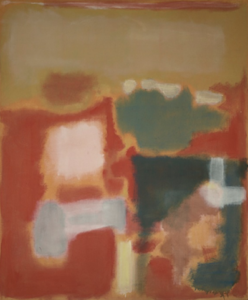Today’s post comes from Bella Dalton-Fenkl, Vassar College class of 2020 and Art Center student docent.


American, 1861-1942
Shadow Decoration, 1887
Oil on canvas
Museum purchase
1887.2

Danish, 1833-1895
Visitors on the North Shore of the Kullen Peninsula, Sweden, 1880
Oil on canvas
Purchase, Friends of the Frances Lehman Loeb Art Center Fund
2000.13.1
Sometimes a work of art in our collection must wait to be put on display in the galleries due to requiring conservation. However, even works that need to stay in storage for this and other reasons can help to illuminate the subject of art, for these works can still be examined with the use of the Loeb database.
One such work is Woman and Child in the Woods, a nineteenth-century oil painting on canvas by Norwegian artist Oscar Wergeland. Wergeland, who lived from 1844 to 1910 and taught art and craft at the Norwegian National Academy of Craft and Art Industry, is most known for his history painting of the 1814 Norwegian Constituent Assembly (the confirmation of the Norwegian constitution) which became famous enough to be printed on banknotes, but he created many genre and landscape paintings as well. Woman and Child in the Woods is a work that combines elements of both genre painting and landscape.
In this thickly-painted work, a child crouches down in front of a cluster of vaguely-defined flowers while a woman, most likely the child’s mother or caregiver, oversees the action, holding out her arm and pointing. The bright hair and bluish-grey dress of the child contrasts with the mostly-dark clothing of the adult. The entire painting sings with pale blue and cream-colored patches of sunlight that stand out against the rich values of the evergreen woods, and these color combinations lend the work a calming air. The grassy, stone-lined path the two figures stand upon is the only sign that humans have shaped this environment, and as the path disappears amidst the giant trees—nearly as tall as the canvas—it seems as if it leads into a mystical realm, like a fairy world.
Though the artist, Wergeland, cannot be classified as a Romantic, Pre-Raphaelite, or Impressionist painter, similarities can be discerned between the present painting and works that were part of these nineteenth-century movements. A stunning shaft of light near the center of the composition brings to mind the sublime in nature seen in Romantic art; the keen eye turned toward flora and a conventionally feminine scene the works of the PRB; and the play of light and shadow the effects of the Impressionists.
All these shared elements grant the viewers the opportunity to connect this work to others which are currently on display. For instance, Shadow Decoration (1887) by Charles Courtney Curran exhibits a similar fusion of the styles of earlier nineteenth-century movements (again, notice the colored shadows and the feminine focus), and Visitors on the North Shore of the Kullen Peninsula, Sweden (1880) by Carl Frederick Aagaard shares a vivid quality of light: the golden light that rolls over the hills and shines upon the pinkish rocks’ faces is another excellent example of a northern European painter taking inspiration from, and perhaps even dramatically exaggerating, the sunlight and its slant in the region. In Aagaard’s case, he was a painter during the Danish Golden Age of painting, a movement in which such decisions were made intentionally and used to bolster a sense of artistic national identity.
I hope that this post inspires in its readers the drive to explore the collections through the Loeb’s website and see what lies hidden in its databases. When I first laid eyes upon Woman and Child in the Woods by Wergeland, I was struck by its beauty, and I can only hope others have their own similar experiences.




